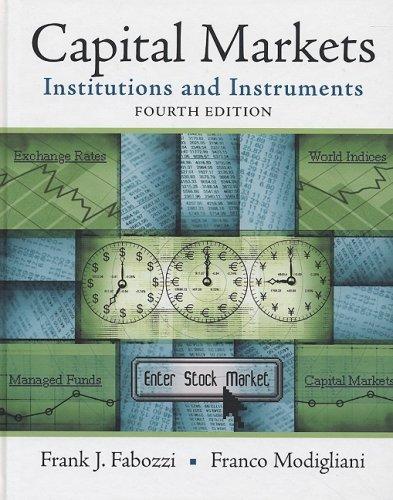FINANCIAL PLANNING CASES CASE 1 The Johnsons Consider Retirement Planning Harry Johnson's father, William, was recently forced into early retirement at age 63 because of poor health. In addition to the psychological drawbacks of the unantici- pated retirement, William's financial situation is poor be- cause he had not planned adequately for retirement. His situation has inspired Harry and Belinda to take a look at their own retirement planning. Together they now make about $200,000 per year ($110,000 for Belinda and $90,000 for Harry) and would like to have a sim- ilar level of living when they retire. Harry and Belinda are both are in their early 40s and they recently received their annual Social Security Benefits Statements indicat- ing that they each could expect about $22,000 per year in today's dollars as retirement benefits in 25 years at age 67. Although their retirement is a long way off, they know that the sooner they put a plan in place, the larger their retirement nest egg will be. (a) Belinda believes that the couple could maintain their current level of living if their retirement income rep- resented 90 percent of their current annual income after adjusting for inflation. Assuming a 4 percent inflation rate, what would Harry and Belindas's annual income need to be over and above their Social Security benefits when they retire at age 67? (Hint: Use Appendix A-1 or visit the DO IT IN CLASS Garman/Forgue companion website.) Page 19 (b) Both Harry and Belinda are covered by defined- contribution retirement plans at work. Harry con- tributes $5,400 to his plan and his employer puts in $2,700. Belinda contributes $6,600 and her em- ployer puts in $3,300. Assuming a 7 percent rate of return, what would their combined retirement nest egg (now valued at $400,000) total 25 years from now if they keep contributing? (Hint: Use Appendix A-3 or visit the Garman/Forgue companion website.) (c) For how many years would the retire- ment nest egg provide the amount of in- come indicated in Question (a)? Assume a 4 percent return after taxes and infla- tion. (Hint: Use Appendix A-4 or visit DO IT IN CLASS Page 548 the Garman/Forgue companion website.) CAS FINANCIAL PLANNING CASES CASE 1 The Johnsons Consider Retirement Planning Harry Johnson's father, William, was recently forced into early retirement at age 63 because of poor health. In addition to the psychological drawbacks of the unantici- pated retirement, William's financial situation is poor be- cause he had not planned adequately for retirement. His situation has inspired Harry and Belinda to take a look at their own retirement planning. Together they now make about $200,000 per year ($110,000 for Belinda and $90,000 for Harry) and would like to have a sim- ilar level of living when they retire. Harry and Belinda are both are in their early 40s and they recently received their annual Social Security Benefits Statements indicat- ing that they each could expect about $22,000 per year in today's dollars as retirement benefits in 25 years at age 67. Although their retirement is a long way off, they know that the sooner they put a plan in place, the larger their retirement nest egg will be. (a) Belinda believes that the couple could maintain their current level of living if their retirement income rep- resented 90 percent of their current annual income after adjusting for inflation. Assuming a 4 percent inflation rate, what would Harry and Belindas's annual income need to be over and above their Social Security benefits when they retire at age 67? (Hint: Use Appendix A-1 or visit the DO IT IN CLASS Garman/Forgue companion website.) Page 19 (b) Both Harry and Belinda are covered by defined- contribution retirement plans at work. Harry con- tributes $5,400 to his plan and his employer puts in $2,700. Belinda contributes $6,600 and her em- ployer puts in $3,300. Assuming a 7 percent rate of return, what would their combined retirement nest egg (now valued at $400,000) total 25 years from now if they keep contributing? (Hint: Use Appendix A-3 or visit the Garman/Forgue companion website.) (c) For how many years would the retire- ment nest egg provide the amount of in- come indicated in Question (a)? Assume a 4 percent return after taxes and infla- tion. (Hint: Use Appendix A-4 or visit DO IT IN CLASS Page 548 the Garman/Forgue companion website.) CAS









